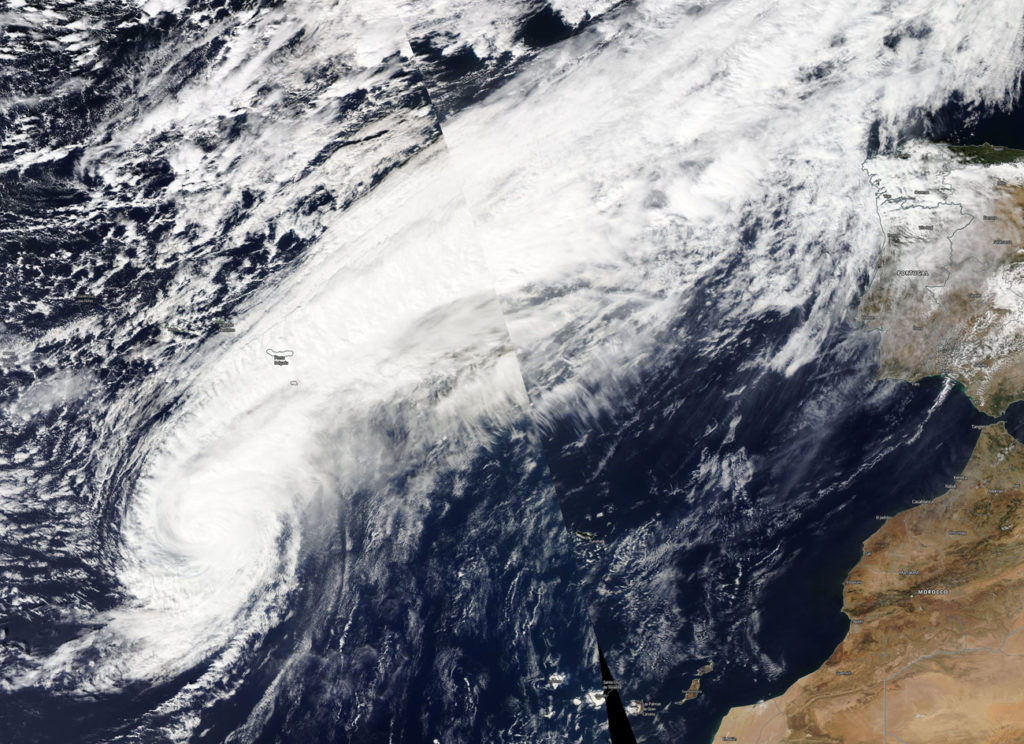Oct. 12, 2018 – NASA Tracking Hurricane Leslie Toward Southern Spain, Portugal
NASA-NOAA’s Suomi NPP satellite passed over the Eastern Atlantic Ocean and captured a visible image of Hurricane Leslie as it continues to travel toward southern Spain and Portugal.

A Tropical Storm Warning is in effect for Madeira Island. Interests in Portugal and Spain should monitor the progress of Leslie. Leslie is expected to bring significant rain and wind impacts to portions of Portugal and Spain by Sunday
Suomi NPP passed over Leslie on Oct. 11 and the Visible Infrared Imaging Radiometer Suite (VIIRS) instrument provided a visible image of the storm. The VIIRS image showed Leslie’s cloud pattern continues to feature a central dense overcast, but with only hints of an eye in visible imagery. A large area of clouds extend northeast of Leslie’s center that are associated with an elongated area or trough of low pressure.
At 2p.m. EDT (1800 UTC), the center of Hurricane Leslie was located near latitude 33.3 degrees north and longitude 26.1 degrees west. Leslie is moving toward the east-northeast near 33 mph (54 km/h). A fast motion toward the east-northeastward is expected to continue through Saturday morning, followed by a slower eastward motion late Saturday through Monday.
Maximum sustained winds are near 85 mph (140 kph) with higher gusts. Some weakening is forecast during the next day or so, but Leslie is expected to transition into a powerful post-tropical cyclone by Saturday night, Oct. 13.
On the forecast track, the center of Leslie will pass north of Madeira Island on Saturday, and approach the southwestern portion of the Iberian Peninsula on Saturday night, and move inland over portions of the Iberian Peninsula on Sunday.
By Rob Gutro
NASA’s Goddard Space Flight Center
